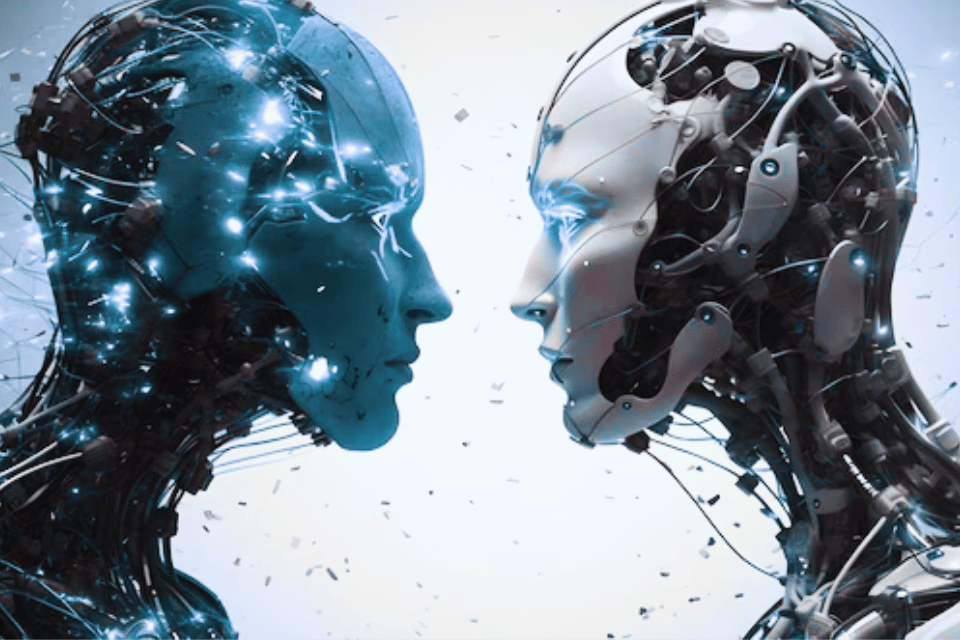From Prediction to Creation: How AI Transforms Digital User Experience

The distinction between Traditional AI and Generative AI, especially when it comes to shaping user and customer experiences, plays a tough role. While much of the focus has been on marketing, there's a bigger picture here—how these AI technologies are transforming the way brands interact with users and customers across all digital touchpoints. Understanding these differences helps us see how both forms of AI are transforming the way brands engage with their audiences, not only through marketing but also across broader digital touchpoints.
Traditional AI: A Reliable Tool for Streamlining Digital Experiences
Traditional AI, also known as Narrow AI, has been in the game for a while, especially when it comes to making our lives more efficient and predictable.
- When you look at digital experiences, Traditional AI is all about analyzing data, automating repetitive tasks, and ensuring users get a more personalized experience.
- It’s what powers things like recommendation engines on eCommerce platforms, where you're shown products based on what you've previously viewed or purchased.
- From a user perspective, this type of AI makes digital experiences smoother.
- You’re getting suggestions or content that feels relevant, which enhances your overall journey online.
- But Traditional AI is essentially reactive—it works based on past behavior and data patterns. It’s good at optimizing processes but isn’t exactly creating anything new.
- That’s where Generative AI comes into the picture.
Generative AI: Creating Unique, Personalized Digital Experiences
Generative AI takes things up a notch by actively creating new content or experiences tailored in real-time to individual users. Unlike Traditional AI, which relies on existing data, Generative AI can build new assets from scratch, whether it's personalized emails, product descriptions, or dynamic web content that adapts as users engage with it.
- Imagine visiting a website, and based on your interactions, the layout, offers, and content shift in real-time to fit your needs.
- Generative AI makes that possible by creating an evolving, personalized digital experience that feels genuinely unique to you.
- Generative AI's level of personalization adds a dynamic layer to the customer journey, creating digital environments that feel more human and intuitive.
- It moves the digital experience from a one-size-fits-all model to something that feels alive, adapting as users interact with it.
How Both AIs Shape Digital User and Customer Experiences
- Both Traditional AI and Generative AI are critical to shaping the future of digital experiences. Traditional AI, with its predictive power, ensures that users receive consistent, efficient digital interactions, whether it’s automating tasks or offering personalized recommendations based on past behavior. It’s the backbone of many user experiences we take for granted, making our interactions faster and more streamlined.
- Generative AI, on the other hand, is about creating these experiences. It’s the difference between getting a recommended product and having a completely tailored shopping experience where everything from the website’s design to the products shown evolves with your needs in real-time.
When these two AIs work together, the result is a digital experience that’s both intuitive and constantly adapting. Traditional AI can predict what a user might need, and Generative AI can take that prediction and craft a dynamic, personalized experience that feels fresh and relevant.
The Role of Human Oversight in AI-Driven Digital Experiences
- Even with AI transforming how we experience digital spaces, the human touch is still critical.
- Generative AI can create remarkable experiences, but there’s always a need for human oversight to ensure that these AI-driven experiences align with brand values and customer expectations.
- The blend of AI efficiency and human creativity ensures that digital experiences remain authentic and emotionally resonant.
For businesses, this means leveraging AI for what it does best—automation, personalization, and content generation—while keeping humans in the loop to guide strategy and maintain the right balance of innovation and brand integrity. After all, even the most advanced AI can’t replicate the human ability to connect on an emotional level, which is essential for building long-term customer relationships.
The Future of Digital Experience with AI
The lines between Traditional AI and Generative AI will continue to blur, especially in how they shape digital experiences. We’re already seeing AI move towards real-time adaptation, hyperpersonalization, and even creating entirely new digital environments that change based on user input.
- Picture a future where your entire online journey—whether on a website, app, or through a brand’s customer service channel—is generated in real-time based on your unique preferences and behavior.
- From personalized marketing campaigns to website interfaces that morph to suit your style, the possibilities are endless.
- Generative AI will play a pivotal role in making this future a reality, while Traditional AI ensures these experiences are efficient, consistent, and reliable.
To Be The One To Talk About It
Both Traditional and Generative AI are changing the game when it comes to digital experiences. Traditional AI enhances efficiency and personalization by predicting user needs and automating repetitive tasks, while Generative AI creates entirely new experiences tailored to individual users in real-time.
These AI technologies are revolutionizing how brands engage with customers, making every touchpoint more personalized, intuitive, and dynamic. As AI continues to evolve, so will the digital experiences we encounter, making the future of user and customer interactions more seamless, engaging, and human-centered.
Dive into our latest blogs for a deeper understanding of all the trending topics around us!!




